
|
Training, Open Source Programming Languages |
| Home | Accessibility | Courses | The Mouth | Resources | Site Map | About Us | Contact |
| For 2023 (and 2024 ...) - we are now fully retired from IT training. We have made many, many friends over 25 years of teaching about Python, Tcl, Perl, PHP, Lua, Java, C and C++ - and MySQL, Linux and Solaris/SunOS too. Our training notes are now very much out of date, but due to upward compatability most of our examples remain operational and even relevant ad you are welcome to make us if them "as seen" and at your own risk. Lisa and I (Graham) now live in what was our training centre in Melksham - happy to meet with former delegates here - but do check ahead before coming round. We are far from inactive - rather, enjoying the times that we are retired but still healthy enough in mind and body to be active! I am also active in many other area and still look after a lot of web sites - you can find an index ((here)) |
|
Designing your application - using UML techniques
When you're planning to write an application, you shouldn't just start writing code - you should think about what you're going to do and plan ahead. But how do you plan ahead? How do you ensure that you've thought of things from various angles? UML (Unified Modeling Language) is a way of drawing (modeling) a system through a series of diagrams of different types - there are 7 basic types - and there are various software packages that can help you. But to go the whole hog and use them all on a small system is overkill, and on courses I often suggest to delegates it's far more practical to think things through and to know that you could draw the diagrams, rather than to draw them all with all the formally designated shapes and symbols. For an application I specified and started to write yesterday, I drew some example diagrams, which I'll share with you here. The application requirement is to analyse a day's web server log files and extract information from them about the types and lengths of visits (a typically woolly or fluffy initial spec). Let's draw some diagrams ... 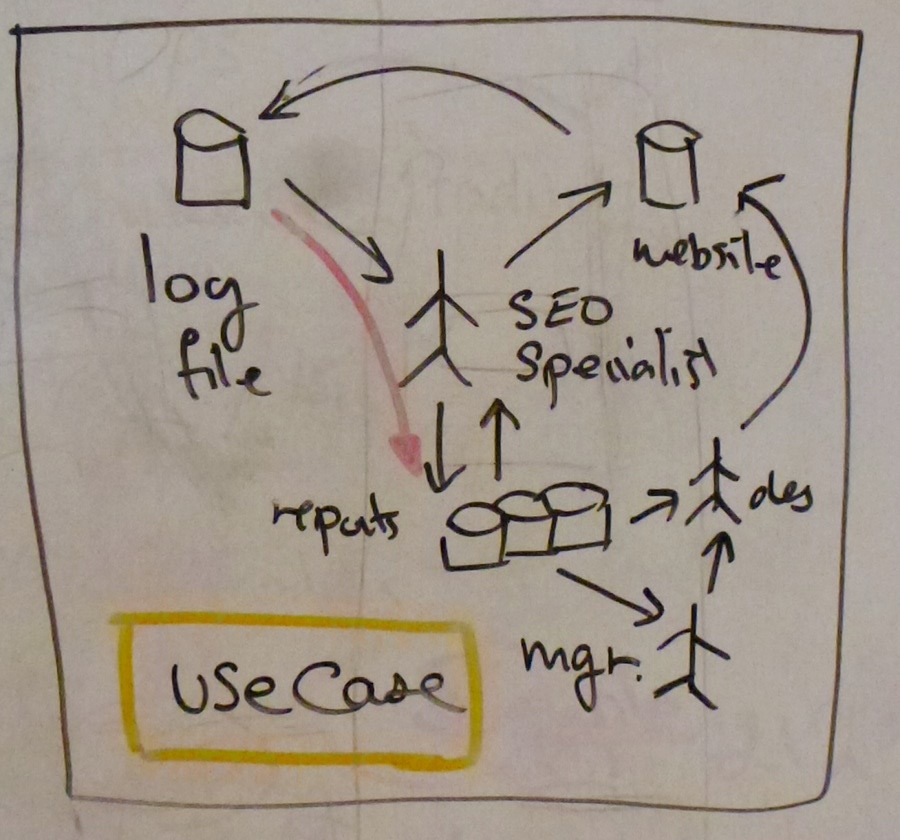 The Use Case diagram. "Where does the data come from, where does it go, and who provides it / who requires the answers". Where "who" is a job role, rather than an individual's name. The application that I started to write is indicated by the red arrow - taking the log files and providing a management / decision helping report. The Use Case diagram. "Where does the data come from, where does it go, and who provides it / who requires the answers". Where "who" is a job role, rather than an individual's name. The application that I started to write is indicated by the red arrow - taking the log files and providing a management / decision helping report. The Object diagrams. For each of the data types (objects), we're defining what they contain - what other objects, how many of them, etc. In this example, we're defining a "visit" as containing one or more "requests". Each visit will contain one "browser" object and one "ip" object. The Object diagrams. For each of the data types (objects), we're defining what they contain - what other objects, how many of them, etc. In this example, we're defining a "visit" as containing one or more "requests". Each visit will contain one "browser" object and one "ip" object.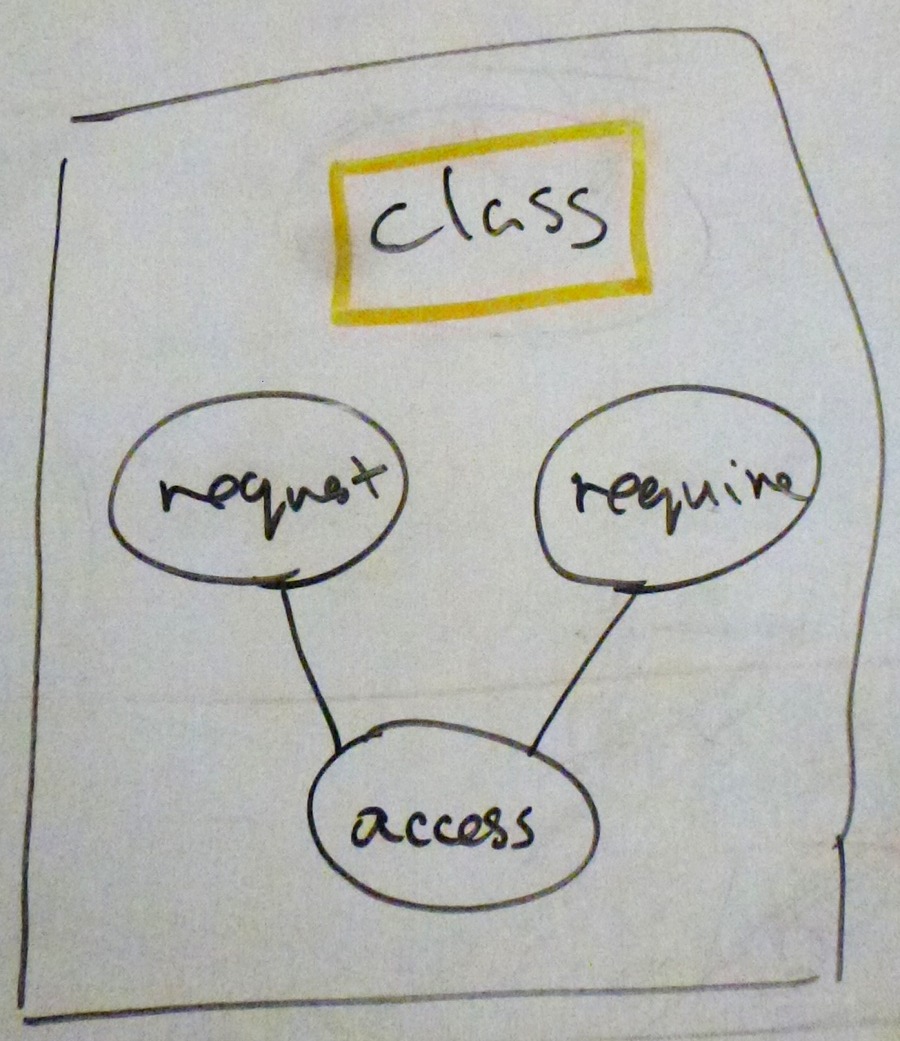 Class diagrams. Where data types have subclasses / other subsidiary types, you'll need to work out your inheritance tree. In this example, website access requests within a visit are divided into "request" objects which are specifically requested by a visiting user, and "require" objects which are called up within a page by a request - that's accesses for things like style sheets and embedded images. Class diagrams. Where data types have subclasses / other subsidiary types, you'll need to work out your inheritance tree. In this example, website access requests within a visit are divided into "request" objects which are specifically requested by a visiting user, and "require" objects which are called up within a page by a request - that's accesses for things like style sheets and embedded images.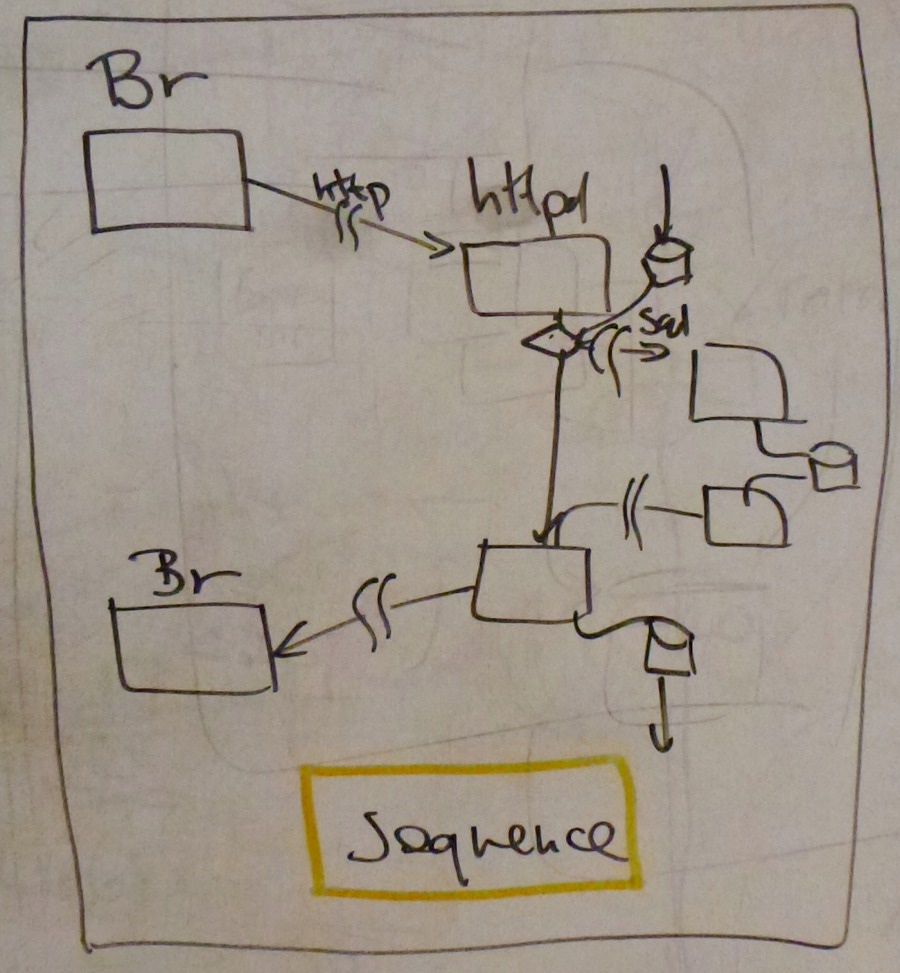 Sequence diagrams. When the application (or a part of it) is run, what actually happens? In this example diagram, a browser calls up a web server via the http protocol. The server application may call up an SQL database, or it may use data it already has (cached?) on the local disc and not use the database stage. This diagram helps you spot bottlenecks, and provides you with a route to finding what's happened if the application fails to run to completion. Sequence diagrams. When the application (or a part of it) is run, what actually happens? In this example diagram, a browser calls up a web server via the http protocol. The server application may call up an SQL database, or it may use data it already has (cached?) on the local disc and not use the database stage. This diagram helps you spot bottlenecks, and provides you with a route to finding what's happened if the application fails to run to completion.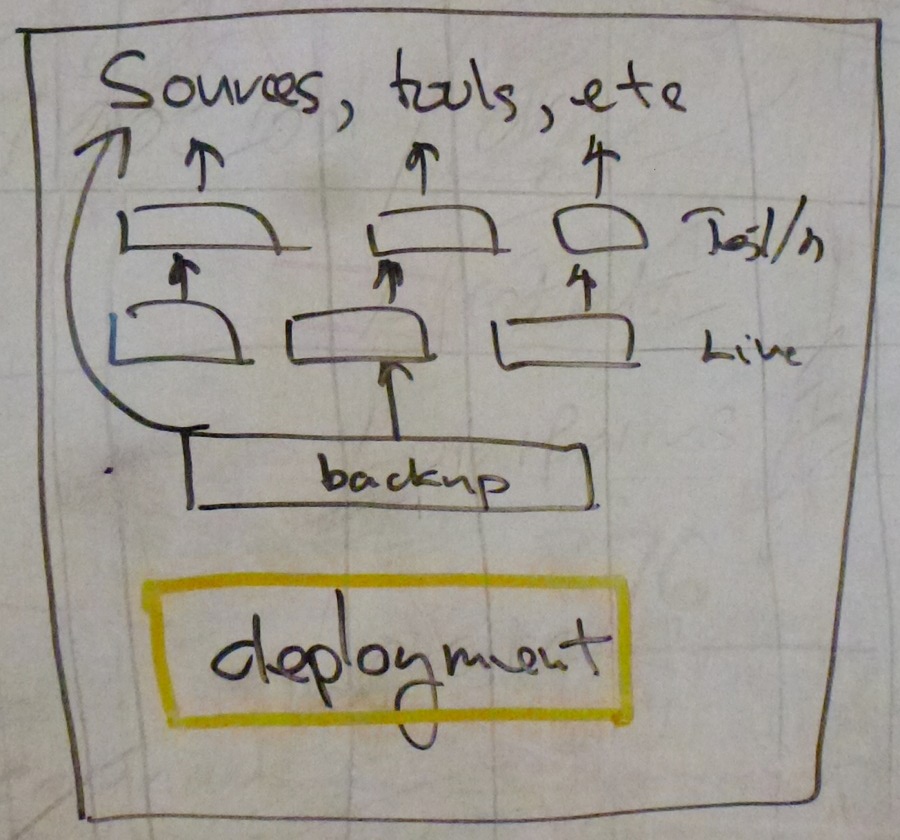 The Deployment diagram. This shows you all the tools that you need, how you go from test and development system through to pre-production systems, the live system, and on to backups. It will include things like the source code control system that you use, and provide you with an indication of how you can roll back if something goes wrong, and an assurance that (if you follow the diagrams) that you really do have a backup of everything so that you can roll back. The Deployment diagram. This shows you all the tools that you need, how you go from test and development system through to pre-production systems, the live system, and on to backups. It will include things like the source code control system that you use, and provide you with an indication of how you can roll back if something goes wrong, and an assurance that (if you follow the diagrams) that you really do have a backup of everything so that you can roll back.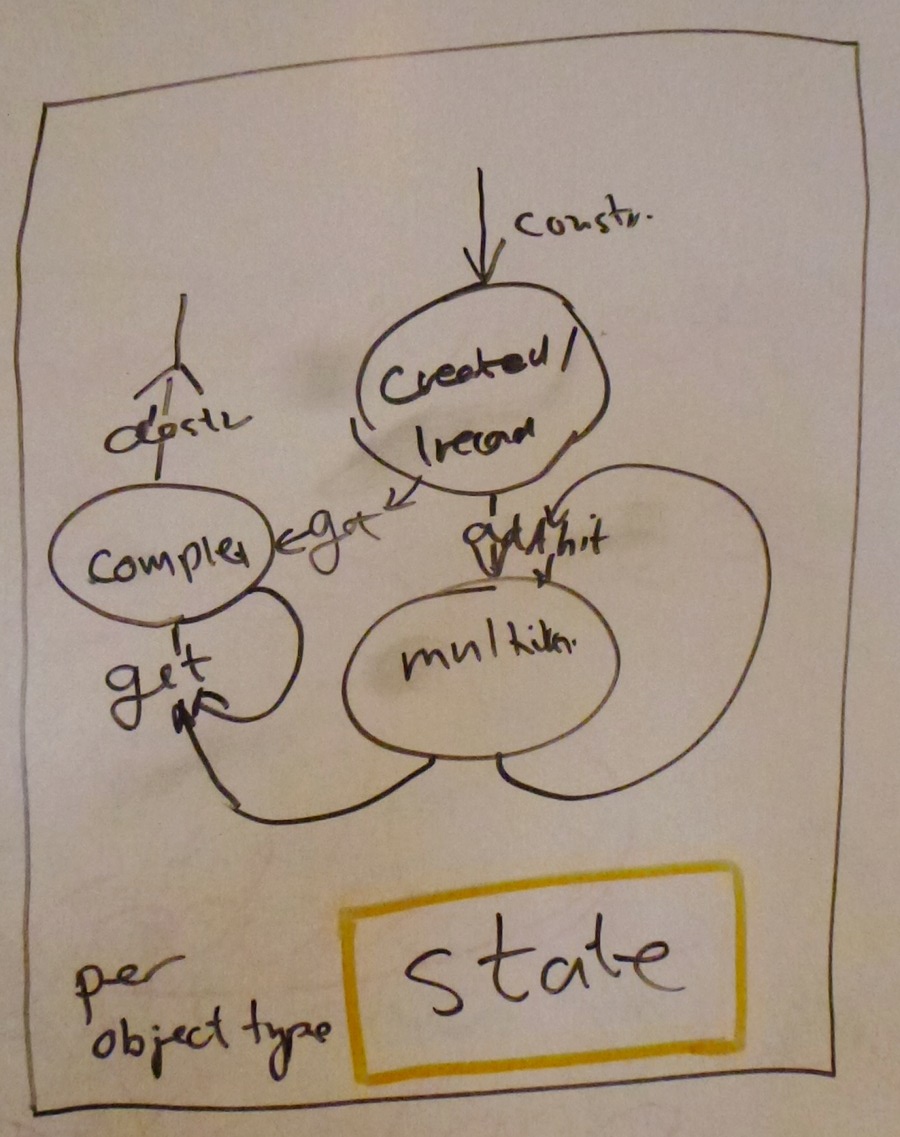 State diagrams. For each type of object - what creates it, and what happens when it's finished with. And what happens in between. If calculations are done, is that as the object is set up, or as the results are needed? Are results cached? ... for more complex objects (such as sessions in a shopping cart), what's the page the object owner - shopper - is currently on? State diagrams. For each type of object - what creates it, and what happens when it's finished with. And what happens in between. If calculations are done, is that as the object is set up, or as the results are needed? Are results cached? ... for more complex objects (such as sessions in a shopping cart), what's the page the object owner - shopper - is currently on?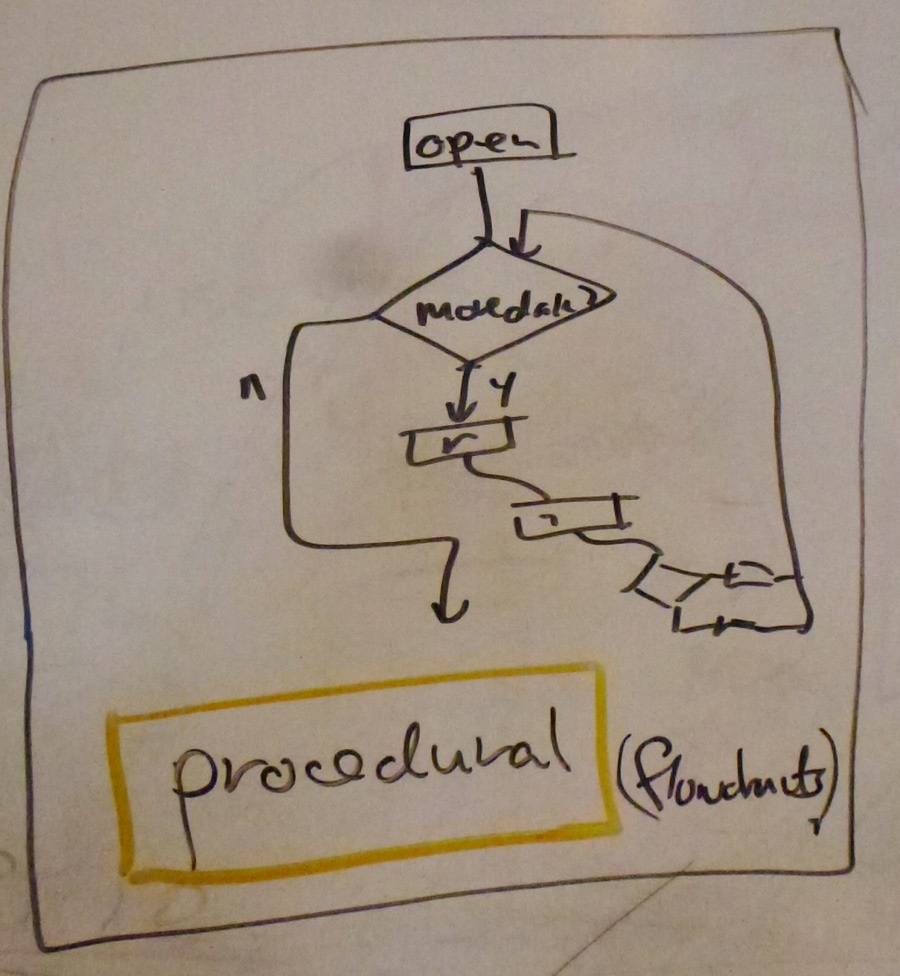 Procedural diagrams. Also known as "flow charts" ;-) ... a diagram of the operation of each method. Procedural diagrams can be converted to actual code on some of the more sophisticated UML tools. Procedural diagrams. Also known as "flow charts" ;-) ... a diagram of the operation of each method. Procedural diagrams can be converted to actual code on some of the more sophisticated UML tools.When you're learning Object Oriented Programming, you really need to learn the syntax and principles of the language elements, and also how to design to make best use of those elements. These diagrams - informally or formally - provide you help with the design. There's a code example - a first (and incomplete) example showing code to support some of the diagrams above [here] from yesterday's Object Oriented Programming in PHP course. (written 2012-02-11, updated 2012-02-25) Associated topics are indexed as below, or enter http://melksh.am/nnnn for individual articles Q907 - Object Orientation and General technical topics - Object Orientation: Design Techniques[80] OO - real benefits - (2004-10-09) [236] Tapping in on resources - (2005-03-05) [507] Introduction to Object Oriented Programming - (2005-11-27) [534] Design - one name, one action - (2005-12-19) [656] Think about your design even if you don't use full UML - (2006-03-24) [747] The Fag Packet Design Methodology - (2006-06-06) [831] Comparison of Object Oriented Philosophy - Python, Java, C++, Perl - (2006-08-13) [836] Build on what you already have with OO - (2006-08-17) [1047] Maintainable code - some positive advice - (2007-01-21) [1217] What are factory and singleton classes? - (2007-06-04) [1224] Object Relation Mapping (ORM) - (2007-06-09) [1435] Object Oriented Programming in Perl - Course - (2007-11-18) [1528] Object Oriented Tcl - (2008-02-02) [1538] Teaching Object Oriented Java with Students and Ice Cream - (2008-02-12) [2169] When should I use OO techniques? - (2009-05-11) [2170] Designing a heirarcy of classes - getting inheritance right - (2009-05-11) [2327] Planning! - (2009-08-08) [2380] Object Oriented programming - a practical design example - (2009-08-27) [2501] Simples - (2009-11-12) [2523] Plan your application before you start - (2009-12-02) [2717] The Multiple Inheritance Conundrum, interfaces and mixins - (2010-04-11) [2741] What is a factory? - (2010-04-26) [2747] Containment, Associative Objects, Inheritance, packages and modules - (2010-04-30) [2785] The Light bulb moment when people see how Object Orientation works in real use - (2010-05-28) [2865] Relationships between Java classes - inheritance, packaging and others - (2010-07-10) [2878] Program for reliability and efficiency - do not duplicate, but rather share and re-use - (2010-07-19) [2889] Should Python classes each be in their own file? - (2010-07-27) [2953] Turning an exercise into the real thing with extreme programming - (2010-09-11) [2977] What is a factory method and why use one? - Example in Ruby - (2010-09-30) [3063] Comments in and on Perl - a case for extreme OO programming - (2010-11-21) [3085] Object Oriented Programming for Structured Programmers - conversion training - (2010-12-14) [3260] Ruby - a training example that puts many language elements together to demonstrate the whole - (2011-04-23) [3454] Your PHP website - how to factor and refactor to reduce growing pains - (2011-09-24) [3760] Why you should use objects even for short data manipulation programs in Ruby - (2012-06-10) [3763] Spike solutions and refactoring - a Python example - (2012-06-13) [3798] When you should use Object Orientation even in a short program - Python example - (2012-07-06) [3844] Rooms ready for guests - each time, every time, thanks to good system design - (2012-08-20) [3878] From Structured to Object Oriented Programming. - (2012-10-02) [3887] Inheritance, Composition and Associated objects - when to use which - Python example - (2012-10-10) [3928] Storing your intermediate data - what format should you you choose? - (2012-11-20) [3978] Teaching OO - how to avoid lots of window switching early on - (2013-01-17) [4098] Using object orientation for non-physical objects - (2013-05-22) [4374] Test driven development, and class design, from first principles (using C++) - (2014-12-30) [4430] The spirit of Java - delegating to classes - (2015-02-18) [4449] Spike solution, refactoring into encapsulated object methods - good design practise - (2015-03-05) [4628] Associative objects - one object within another. - (2016-01-20) H108 - Objects in PHP [67] Object Oriented Programming in PHP - (2004-09-29) [124] PHP v Java - (2004-11-20) [205] PHP5 lets you say no - (2005-02-07) [343] Should I use structured or object oriented? - (2005-06-10) [421] Don't repeat code - use loops or functions - (2005-08-21) [485] North, Norther and Northest - PHP 5 Objects - (2005-11-04) [720] Planning a hotel refurb - an example of a Gant chart in PHP - (2006-05-14) [1027] Cue the music, I'm happy. - (2007-01-09) [1153] Object Oriented Model - a summary of changes from PHP4 to PHP5 - (2007-04-18) [1535] OO PHP demonstration - comparing objects and more - (2008-02-08) [1682] Accounts in PHP - an OO demo - (2008-06-19) [1819] Calling base class constructors - (2008-10-03) [1820] Sorting objects in PHP - (2008-10-04) [1925] Introduction to Object Oriented Programming - (2008-12-06) [2160] PHP - getclass v instanceof - (2009-05-07) [2171] Cleaning up redundant objects - (2009-05-11) [2172] PHP4 v PHP5 - Object Model Difference - (2009-05-11) [2434] Abstract classes, Interfaces, PHP and Java - (2009-10-03) [2435] Serialization - storing and reloading objects - (2009-10-04) [2632] Shipping a test harness with your class in PHP - (2010-02-12) [2641] Object Oriented Programming in PHP - (2010-02-19) [2680] Static class members in PHP - a documented example - (2010-03-16) [2774] PHP - Object Oriented Design in use - (2010-05-21) [2921] Does copying a variable duplicate the contents? - (2010-08-14) [2922] Getting the OO design write - with PHP a example - (2010-08-14) [3142] Private and Public - and things between - (2011-01-22) [3210] Catchable fatal error in PHP ... How to catch, and alternative solutions such as JSON - (2011-03-22) [3211] Computer Graphics in PHP - World (incoming data) to Pixel (screen) conversion - (2011-03-24) [3608] Design Patterns - what are they? Why use them? - (2012-02-12) [3609] How do classes relate to each other? Associated Classes - (2012-02-12) [3840] Autoload in PHP - (2012-08-17) [3841] Copying, duplicating, cloning an object in PHP - (2012-08-18) [3843] Caching Design Patterns - (2012-08-20) [3953] Objects in PHP - Revision - (2012-12-16) [4057] stdClass in PHP - using an object rather than an associative array - (2013-04-02) [4073] Learning about Object Orientation in PHP - a new set of examples - (2013-04-28) [4356] Object factories in C++, Python, PHP and Perl - (2014-12-19) [4366] Changing what operators do on objects - a comparison across different programming languages - (2014-12-26) [4626] Singleton design pattern - examples and uses - (2016-01-20) [4627] Caching results in an object for efficiency - avoiding re-calculation - (2016-01-20)
Some other Articles
A customer thanks Well House ManorTraining to do a job, or training to pass an exam? Designing your application - using UML techniques Gypsy and Billy enjoy the snow Snow comes to Melksham, Wiltshire - pictures Melksham Campus - a blog you can read, and a place you can comment Another cold night Emerging proposals for land to the east of Spa Road, Melksham |
4759 posts, page by page
Link to page ... 1, 2, 3, 4, 5, 6, 7, 8, 9, 10, 11, 12, 13, 14, 15, 16, 17, 18, 19, 20, 21, 22, 23, 24, 25, 26, 27, 28, 29, 30, 31, 32, 33, 34, 35, 36, 37, 38, 39, 40, 41, 42, 43, 44, 45, 46, 47, 48, 49, 50, 51, 52, 53, 54, 55, 56, 57, 58, 59, 60, 61, 62, 63, 64, 65, 66, 67, 68, 69, 70, 71, 72, 73, 74, 75, 76, 77, 78, 79, 80, 81, 82, 83, 84, 85, 86, 87, 88, 89, 90, 91, 92, 93, 94, 95, 96 at 50 posts per pageThis is a page archived from The Horse's Mouth at http://www.wellho.net/horse/ - the diary and writings of Graham Ellis. Every attempt was made to provide current information at the time the page was written, but things do move forward in our business - new software releases, price changes, new techniques. Please check back via our main site for current courses, prices, versions, etc - any mention of a price in "The Horse's Mouth" cannot be taken as an offer to supply at that price.
Link to Ezine home page (for reading).
Link to Blogging home page (to add comments).
PH: 01144 1225 708225 • EMAIL: info@wellho.net • WEB: http://www.wellho.net • SKYPE: wellho
PAGE: http://www.wellho.net/mouth/3607_.html • PAGE BUILT: Sun Oct 11 16:07:41 2020 • BUILD SYSTEM: JelliaJamb